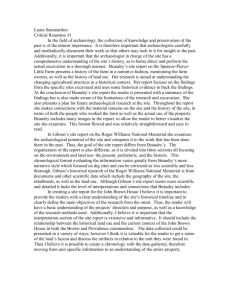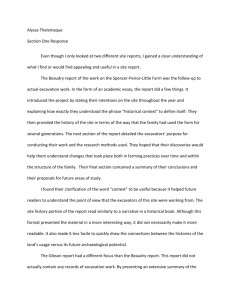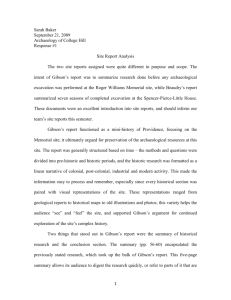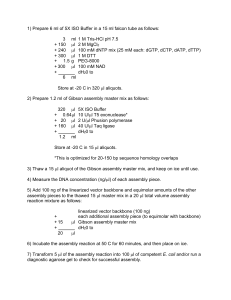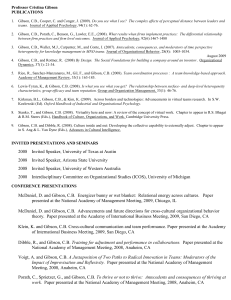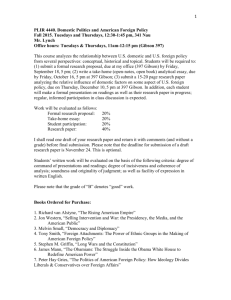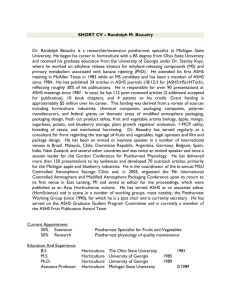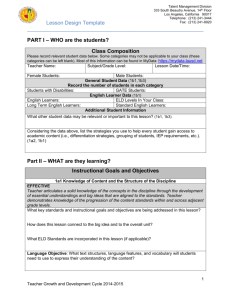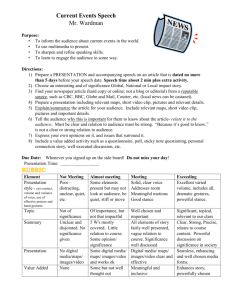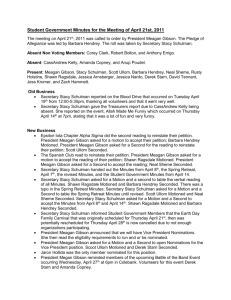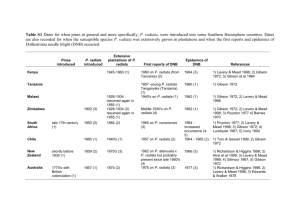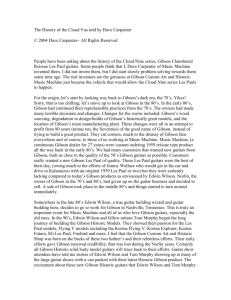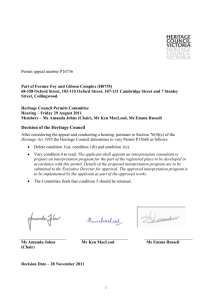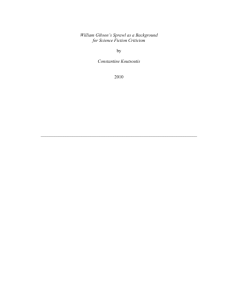camarillo_critical_response
advertisement
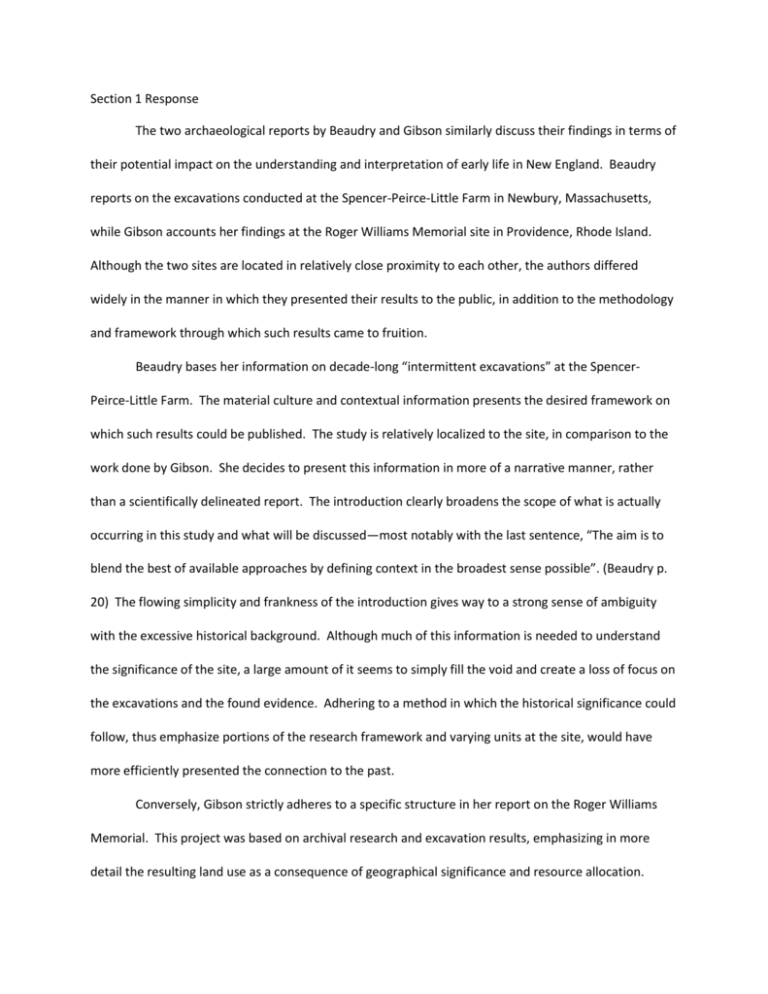
Section 1 Response The two archaeological reports by Beaudry and Gibson similarly discuss their findings in terms of their potential impact on the understanding and interpretation of early life in New England. Beaudry reports on the excavations conducted at the Spencer-Peirce-Little Farm in Newbury, Massachusetts, while Gibson accounts her findings at the Roger Williams Memorial site in Providence, Rhode Island. Although the two sites are located in relatively close proximity to each other, the authors differed widely in the manner in which they presented their results to the public, in addition to the methodology and framework through which such results came to fruition. Beaudry bases her information on decade-long “intermittent excavations” at the SpencerPeirce-Little Farm. The material culture and contextual information presents the desired framework on which such results could be published. The study is relatively localized to the site, in comparison to the work done by Gibson. She decides to present this information in more of a narrative manner, rather than a scientifically delineated report. The introduction clearly broadens the scope of what is actually occurring in this study and what will be discussed—most notably with the last sentence, “The aim is to blend the best of available approaches by defining context in the broadest sense possible”. (Beaudry p. 20) The flowing simplicity and frankness of the introduction gives way to a strong sense of ambiguity with the excessive historical background. Although much of this information is needed to understand the significance of the site, a large amount of it seems to simply fill the void and create a loss of focus on the excavations and the found evidence. Adhering to a method in which the historical significance could follow, thus emphasize portions of the research framework and varying units at the site, would have more efficiently presented the connection to the past. Conversely, Gibson strictly adheres to a specific structure in her report on the Roger Williams Memorial. This project was based on archival research and excavation results, emphasizing in more detail the resulting land use as a consequence of geographical significance and resource allocation. Overall, the methodology, project purpose, and presentation manner was more thorough and scientifically delineated than that of Beaudry. Gibson spent much less time focusing on intricate details of the historical background; instead, noting the broad correlations and transitions. The report was separated well, in terms of section length and relative information. Gibson also did well in connecting the results back to the historical significance, land use, and development of the site from a Native American domain, to an early colonial setting, and, finally, a memorial. In terms of the upcoming site report for the John Brown House, the best way to present the data would be modeled after the Gibson report. Archaeology prides itself on being an interdisciplinary science; therefore, an adequate framework would be one of scientific basis—clearly structured with an emphasis on the methodology as the adhesive or bridge between the present and the past. The historical background must be discussed, initially, so to present the reader with the necessary knowledge of the subject. However, this portion need not be as extensive as the Beaudry report. Instead, the historical significance should be intermittently inserted into the report where evidential basis deems relevant.
